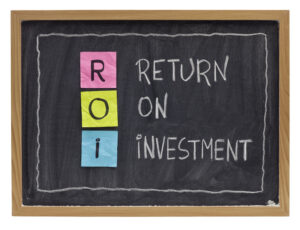Return on investment (ROI) is the bottom line that many groups use to make strategic decisions. In most industries, it is important to justify and account for everything that we do as a solid investment for our company. In a 2013 article by the ROI institute, author Gary M. Stern notes that "92 out of 96 Fortune 500 CEOs said that they are most interested in learning the business impact of their learning and development programs, but only 8% see that happening at their companies now."
industries, it is important to justify and account for everything that we do as a solid investment for our company. In a 2013 article by the ROI institute, author Gary M. Stern notes that "92 out of 96 Fortune 500 CEOs said that they are most interested in learning the business impact of their learning and development programs, but only 8% see that happening at their companies now."
Why are there so few companies looking at their learning programs? In the training industry, how do we quantify a process that is subjective and often lacks successful assessment and evaluation to determine ROI? How much are we spending? Is it worth the investment?
According to the Association for Talent Development State of the Industry survey (2013 and 2014), the average expenditure per employee was $1,208 for 2014. That is up from the $1,195 in 2013. However, the average cost per learning hours used went down from $89 in 2013 to $74 in 2014. More and more companies are looking for ways to pack more punch into each learning hour but without increasing costs.
Crunch the Numbers
In the learning and development industry, ROI often includes several aspects. Start by looking at the overall numbers of how many learners are served by your training dollars. This can be done on an event basis or a time-basis, like annually or quarterly. You can also figure the cost per learning hour, like the Association for Talent Development did for the Industry survey. Don’t forget to include not only the cost of the training but expenses for travel, internal staff, supplies, rewards/incentives, and time away from job.
Another way to look at ROI is to examine the increase or decrease in performance (as much as you can measure) for the training events and the training program as a whole. Each industry has metrics that it can look at for employees that have been through training, whether that be time on task, project production, etc. Additionally, you can look at the overall productivity of a team or of the organization as a whole.
Ask the Questions
Whenever you conduct a training event, make sure you are using a post-session survey that addresses how much time the training has benefitted the learner. If possible, conduct a pre-training survey to use as a baseline to benchmark for evaluating the post-session feedback and to learn the expectations for the training. Survey all potential participants and their managers.
Sometimes the productivity increase might be seen (an even quantified) through these surveys and associated feedback. I know that these surveys may seem tedious, but they are essential to examining your training program and determining the ROI.
Utilize your Metrics
Other information that your company already gathers can be used to round out the ROI picture for your training. These metrics could include:
- Customer satisfaction – Although this may be considered soft data, it is important to mine your data for items like ratings on customer reviews, numbers of repeat visits/services/purchases/referrals, and time on issue/complaint resolution.
- Employee satisfaction – Another area often considered as intangible but quantifiable statistics can be found in many areas including turnover/retention, grievances, and absenteeism.
- Productivity numbers – Depending on your industry, you should have ample ways to measure performance such as successful task completion, achievement of goals, or meeting/exceeding expectations.
- Labor costs – These numbers are usually the easiest to factor into your ROI picture. What gets left out most often when examining training is the cost to be able to replace an employee versus the cost to train or re-train them.
You can measure the value you add to your organization and show the goals achieved with your allocated resources in a reliable and accurate way. Through careful planning and credible methods for obtaining and analyzing your data, finding and presenting your learning and development ROI can be a valuable contribution to your company’s bottom line.
Source credit:
Association for Talent and Development State of the Industry Report 2013 and 2014. Gary Stearn, 2013, ROI Institute
